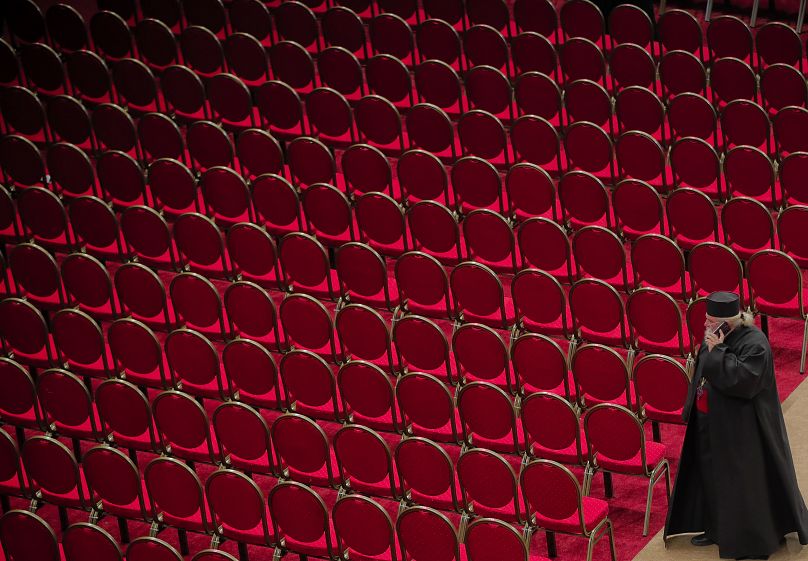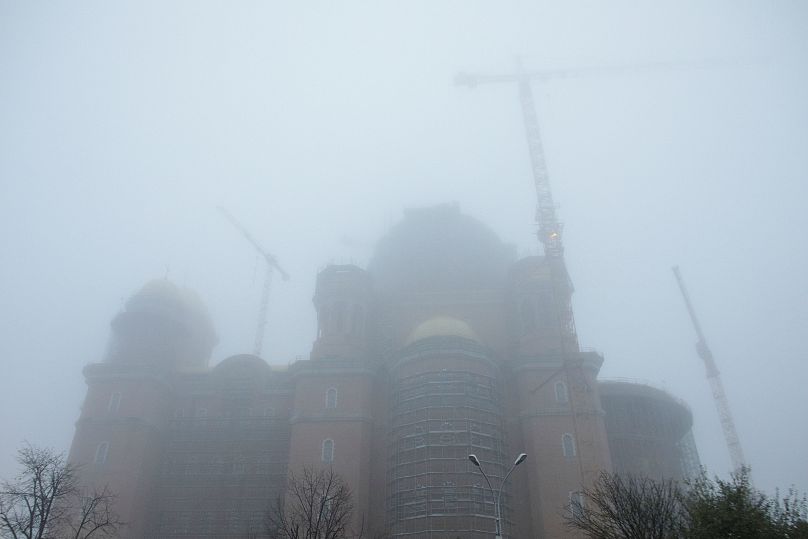Romania's orthodox church imposes itself on Bucharest as it battles to retain influence across society.
On Sunday, November 25, 2018, thousands of Romanian believers flocked to witness the blessing of the Romanian People’s Salvation Cathedral by a cohort of Orthodox priests, led by the Patriarch of Constantinople. The date was symbolically chosen close to December 1st, Romania’s national day. It was framed as a commemorative gesture marking the centenary of the 1918 unification when the Romanian kingdom united with Transylvania and Moldova at the end of World War I.
The cathedral project was born at the end of the 19th century after Romania’s War of Independence in 1877-1878. It was, however, only following Romania’s 1918 unification that the efforts to construct it intensified. In 1920, King Ferdinand I announced that a monumental church was to be built in Bucharest to commemorate the Romanian army’s victory during the First World War. However, due to the economic crisis in the interwar period, World War II and decades of communism plans to construct the cathedral were set aside, only to be revived in 2010 by the current patriarch.
The cathedral is expected to be finished in 2024, though the project’s evolution depends on funding available. After the blessing, it was once again to the general public, as its interior remained to be painted and finalized. It is expected to be the largest and tallest Orthodox Church in the world. According to the Romanian patriarch, the cathedral will accommodate up to 8,000 people, with around 3,000 of those seated.
As with almost any large public project, criticism has focused around delays - it will have taken almost 150 years to build on the current schedule - and costs.
The Orthodox church leadership told Mediafax that around 110 million euros have been spent so far on the construction, with around 75 percent of that coming from the Romanian state.
However, Sa Fie Lumina, an independent journalistic project investigating and reporting on religions in Romania, looked at hundreds of official documents and concluded that the amount of public funding directed to the cathedral is closer to 121 million euros.
Toma Patrascu, the president of the Secular-Humanistic Association (ASUR), stressed that the sum does not even consider the substantial value of the 11ha plot of land that the government has granted for the building which, he estimates, far surpasses 200 million euros. The space is situated in the heart of Bucharest, close to the Romanian Parliament, a megalithic construction built by the country's former dictator, Nicolae Ceausescu.
This is despite the fact that church officials, such as Ciprian Campineanul, patriarchal vicar bishop, have repeatedly declared, that the church will not seek government subsidies, but will rely exclusively on believers’ support.
Patrascu stressed that the church can and should self-finance its projects and cease its dependency on public funding. The Orthodox Church is a profitable business in Romania, drawing revenues through selling religious artefacts and leasing property or land granted by the government. In 2016 alone, the church had a surplus of over 4.2 million euros, according to the balance sheets published by the Ministry of Finance.
As the church revels in its increased visibility on the Bucharest skyline, it is fighting a tumbling level of trust across society. Before 2010, 85-89 percent of the population stated that they had confidence in the church as an institution, a number which has since dropped to less than 50 percent.
The church's campaigning in a referendum over same-sex marriage that split society alienated some sections of its following. The political dimension of the vote - backed by the ruling PSD - in a move critics described as a smokescreen to distract from corruption and maladministration accusations, also hurt its once universal appeal.
Mircea Morariu, a professor at the University of Oradea, noted that the progress on the cathedral's construction 'is almost the only notable thing that we can have done for the centenary." However, no matter how grandiose the building, it will not resolve the problems faced by the church, he noted.
The only way the Orthodox Church will regain its position is "if it understands that its natural ally is the people, not the fleeting leaders, to whom it is singing its praises at the moment," he told Euronews.
The Orthodox Church’s press department had not responded to several requests for comment by the time of publication of this article.













